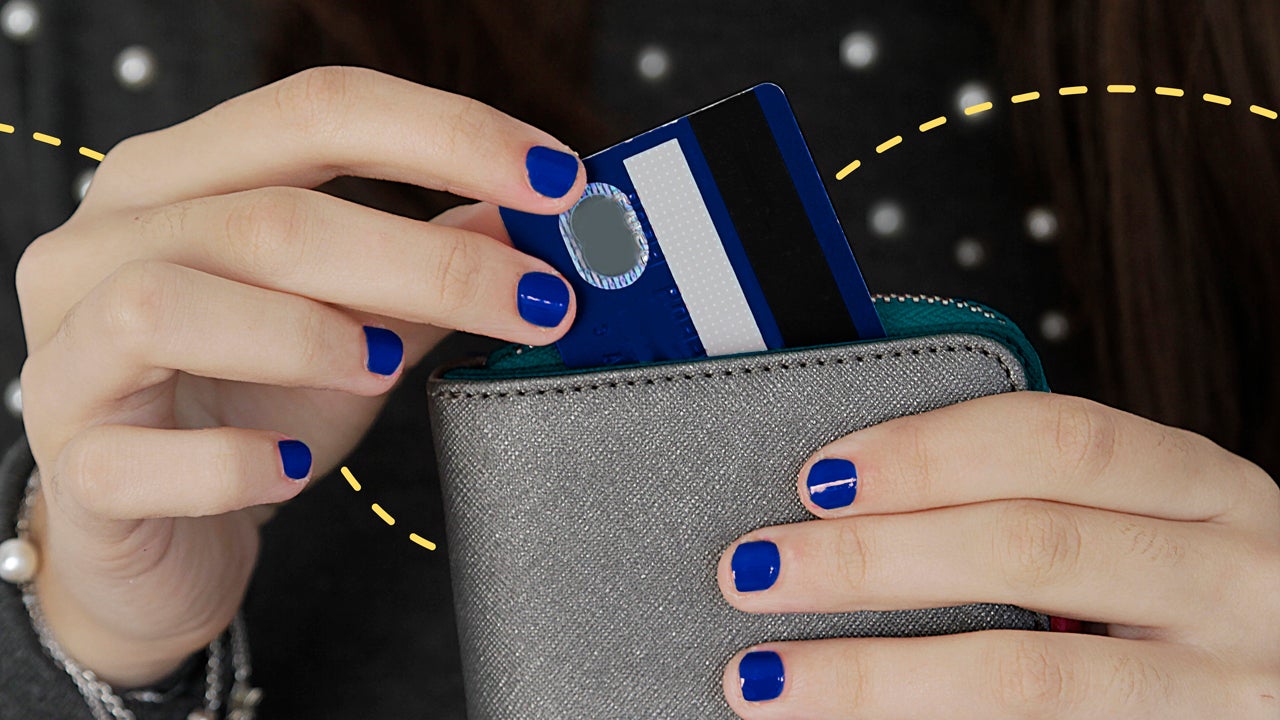5 tips for couples choosing a shared credit card

Bankrate writer Rebecca Betterton and her boyfriend, Jack, have been dating for a year and a half, and they’re taking an exciting next step — moving in together. They know that means more joint expenses like furniture, groceries and pet care, so they’ve begun researching a credit card to share.
“Our main goal is to avoid having to use Venmo for home expenses,” Betterton explains. “Instead, we want to have a shared credit card.”
As someone who used to play Venmo tag with a live-in partner, I understand where Betterton’s coming from. In fact, more than 1 in 3 (38 percent) of people keep a combination of separate and joint financial accounts with their partner, according to Bankrate’s Financial Infidelity Survey. That’s also known as the “yours, mine and ours” budgeting method.
I reached out to Michelle Winterfield, co-founder of the expense-sharing app Tandem, for insight on how today’s couples are managing their money.
“Many couples now move in together before getting married, which is totally different than ever before,” she says. “Both partners are coming with more complicated financial situations just because they’ve worked longer, they’ve taken on more debt, they’ve started to invest.”
Based on my conversations with both an expert and aspiring card-carrying couple, here are five tips for how to find “the one” — credit card, that is.
1. Consider your shared goals
Before signing on the dotted line of a lease, credit card application or even a Netflix subscription, it’s a good idea to talk about your shared goals.
Are you hoping to plan more date nights? Will you pay for a wedding or an international vacation soon? Are you saving up to buy a house? Whatever your goals, a shared credit card — and its potential rewards — could help with long-term planning.
Betterton and her boyfriend love traveling. “On our third date, we went on a trip,” she says. “It’s a big part of our life.”
Because they hope to travel more, it makes sense for them to explore travel rewards cards for their shared expenses. That way, they can earn rewards to put toward upcoming trips.
If you and your partner see dinner dates or concerts in your future, a cash back card with rewards you can redeem for gift cards or event tickets might be a better fit. You could also explore cards tied to certain expense categories or credit-building opportunities.
2. Determine what expenses you’ll put on the credit card
Talk about what expenses will — and won’t — be charged to the card before you choose one. According to Winterfield, some of the most popular merchants where couples split expenses include Amazon, Uber, Trader Joe’s, Target and Costco.
You can also plan for big purchases during the card’s intro period to cash in on extra rewards. “If you’re moving in together or planning a wedding and you open up a new card, you can get the big sign-up bonus that’s linked to a minimum spending threshold,” Winterfield says. “My husband and I did that and went on our honeymoon to Greece for free.”
Betterton explains that once they choose a card, they’ll buy a couch and other big move-in items during the intro offer period. Those welcome points can go a long way toward their next vacation.
3. Compare cards
With your goals and expenses in mind, it’s time to compare credit cards to pick the one that’s right for you and your partner.
Betterton explains she and her boyfriend have been looking for a card with an annual fee under $200 and that offers rewards and benefits to match their goals. Because they have strong credit and always pay on time, they’re not too concerned about interest rates.
You can compare card factors like rewards, annual fees, recommended credit scores, interest rates, authorized user fees and card benefits like travel insurance or purchase protection. It’s also a good idea to get pre-approved for your top picks before applying.
Winterfield shares that the top connected cards among couples on Tandem are Chase Freedom Unlimited®, Discover it® Cash Back, the Chase Sapphire Preferred® Card and the Capital One Venture X Rewards Credit Card.
4. Decide how you’ll set up the card and split the bill
There are a couple of ways to share a credit card, so you’ll want to talk with your partner about your preferred way to do it.
The simplest way is for one of you to apply as the primary cardholder and then add your partner as an authorized user. This allows both of you to make purchases, build credit and earn rewards. Just keep in mind that the primary cardholder is the person who is legally on the hook for repayments and also “owns” the rewards.
It’s also possible to open a joint account or add your partner as a co-signer. But there are only a few banks who offer those options.
You should also discuss how you’ll split the credit card bill. Winterfield says that some couples split expenses 50/50, some 60/40 and others establish a different ratio. It may depend on your incomes, expense types or life stages.
For instance, if you earn 25 percent more than your partner, it could make sense for you to pay 25 percent more of the credit card bill. If your partner buys organic grocery items and you prefer generic brands, they could fork over a little extra. Or if you’re in grad school, you might cover less of the bill as you pay for tuition and books.
Whatever you decide, have the conversation before that first bill comes so you both know what to expect.
5. Communicate clearly
More than 4 in 10 (42 percent) U.S. adults who are married or living with a partner have kept a financial secret from their significant other, according to Bankrate’s Financial Infidelity Survey. With open communication about your spending habits and budget expectations, you and your partner could avoid relationship landmines.
“We’re both very communicative about our financial goals,” Betterton says. “It’s a very normal conversation.”
Winterfield encourages couples to talk about money early and often in the relationship. “[Sharing a card or an app] really promotes good habits in your relationship with money,” she says. “The more transparent and involved you both are from the start, the more you can negate that emotional stigma around money.”
Weekly or monthly check-ins during which you comb through card transactions and discuss your budget can help the two of you stay on track. And, as in many areas of a relationship, offer each other some room for improvement. It takes time to align your spending with someone else’s. Practice — and purchases over time — makes perfect.
Best credit cards for couples
As you’re comparing credit cards, you might add these top picks for couples to your list.

Chase Sapphire Preferred
-
Best for couples who travel. With a low annual fee of $95, the Sapphire Preferred card offers generous points on travel, dining, streaming services and online grocery purchases that can be put toward your next vacation together. Plus, you can earn 60,000 bonus points after spending $4,000 on purchases within the first three months.

Capital One SavorOne Cash Rewards Credit Card
-
Best for couples who go out. The SavorOne card has no annual fee and offers boosted rewards on dining, entertainment, streaming subscriptions and grocery store purchases (excluding superstores like Walmart and Target). Plus, there’s no cap on the rewards you can earn. You can also earn a one-time $200 cash bonus after you spend $500 on purchases within the first three months from account opening.

Capital One Venture X Rewards Credit Card
-
Best for authorized user perks. The Venture X card has a higher annual fee of $395, but authorized users can be added with no additional fee and get their own Priority Pass Select membership. That means you can get into airport lounges together or separately. Earn flexible rewards, as well as 75,000 bonus miles after spending $4,000 on purchases within the first three months.
The bottom line
Even though it may not sound romantic, discussing finances is an important part of a healthy relationship — especially if you’re going to live together, make big shared purchases or consider getting married. And choosing a shared credit card is a great time to start the conversation. Soon, the two of you and your new credit card could feel like a match made in heaven.
Why we ask for feedback Your feedback helps us improve our content and services. It takes less than a minute to complete.
Your responses are anonymous and will only be used for improving our website.
You may also like


7 credit card tips for beginners




